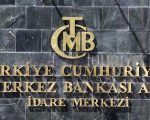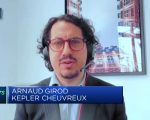
Investment giant Vanguard has made its mark as a provider of low-cost, passive index funds and ETFs, but there is still a role for active management to play, the company’s CEO said Tuesday. Vanguard CEO Tim Buckley said at the Exchange ETF Conference in Miami that the company has about 20% of its assets in active strategies, down from about 90% when he started at the company more than three decades ago. But that the active side of the business is not going away. “We firmly believe in active. We firmly believe in low-cost active. But its place in the portfolio has changed,” Buckley said. “For most clients, it’s an index at the core. And if you have the risk appetite for active, it’s going to play much more on the sideline,” he added. Buckley said that active strategies have a bigger risk budget or a larger standard deviation than index tracking funds to create a “better complement to the index portfolio” that would still be the main part of an investor’s nest egg. When Vanguard is evaluating active managers to join its platform, the Valley Forge, Pa.-based investment company looks to identify the edge that a portfolio team can offers, and then whether that strategy is hard to duplicate, Buckley said. Low management fees are still important in active strategies, because they can keep portfolio managers from taking unnecessary risks, Buckley said. “When you’re not getting paid to risk, and spreads are tight like right now, then don’t take a lot of risk. You don’t have to,” Buckley said. The CEO made the comments on a live taping of the “Masters in Business” podcast . One example of an active strategy that has paid off for Vanguard clients is the Vanguard Ultra-Short Bond ETF (VUSB) , which launched in April 2021. The fund, which has an expense ratio of 0.10% and yields 4.64%, has crossed the $3 billion mark in assets and delivered a slightly positive total return over the past 12 months.








